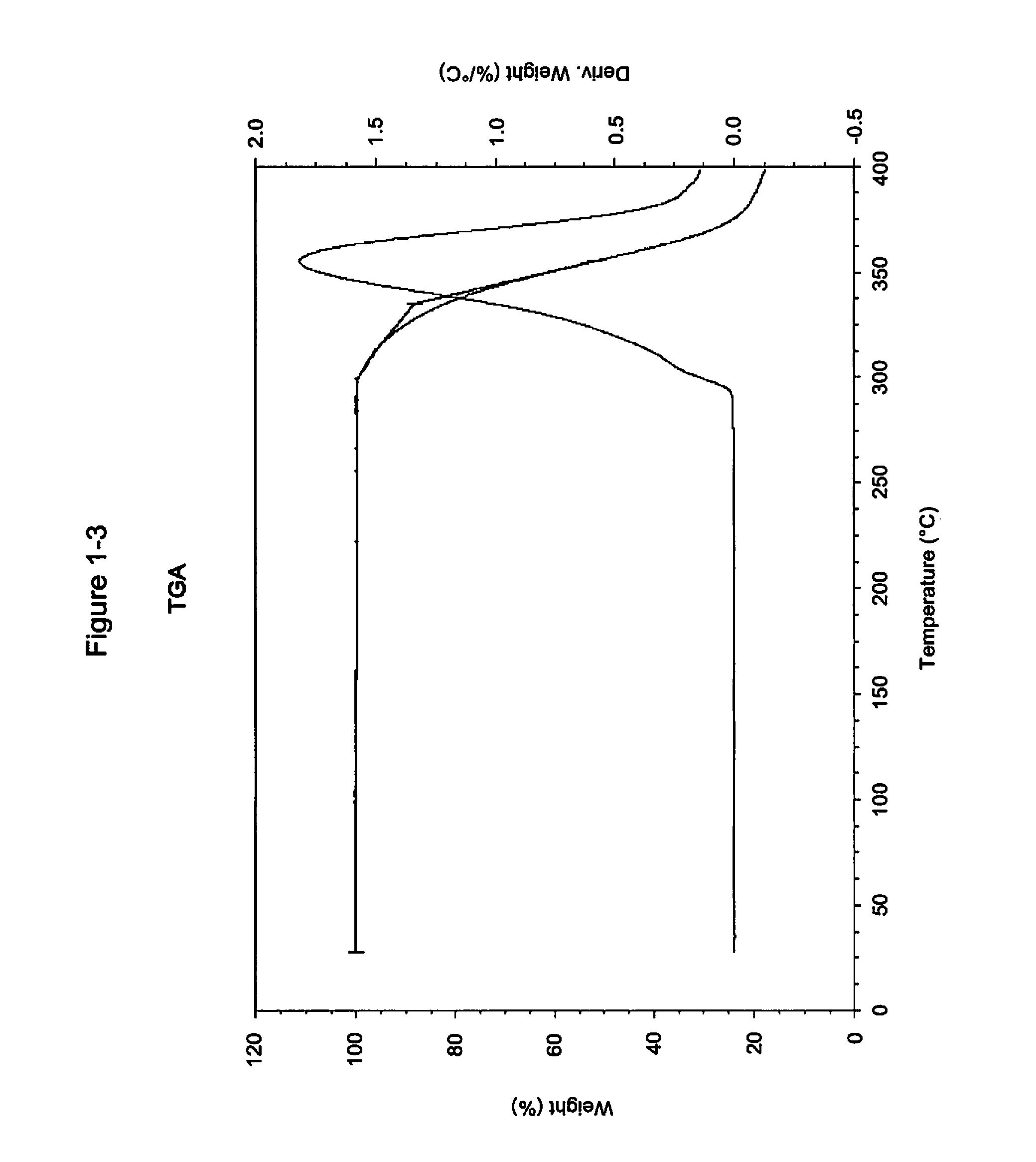Pharmaceutical compositions and administrations thereof
a technology of pharmaceutical compositions and compositions, applied in the field of pharmaceutical compositions, can solve the problems of imbalance in ion and fluid transport, no cure, and individuals with two copies of the cf associated gene suffering from the debilitating and fatal effects of
- Summary
- Abstract
- Description
- Claims
- Application Information
AI Technical Summary
Benefits of technology
Problems solved by technology
Method used
Image
Examples
example 1a
Ethyl 4-oxo-1,4-dihydroquinoline-3-carboxylate (25)
[0189]Compound 23 (4.77 g, 47.7 mmol) was added dropwise to Compound 22 (10 g, 46.3 mmol) with subsurface N2 flow to drive out ethanol below 30° C. for 0.5 hours. The solution was then heated to 100-110° C. and stirred for 2.5 hours. After cooling the mixture to below 60° C., diphenyl ether was added. The resulting solution was added dropwise to diphenyl ether that had been heated to 228-232° C. for 1.5 hours with subsurface N2 flow to drive out ethanol. The mixture was stirred at 228-232° C. for another 2 hours, cooled to below 100° C. and then heptane was added to precipitate the product. The resulting slurry was stirred at 30° C. for 0.5 hours. The solids were then filtered, and the cake was washed with heptane and dried in vacuo to give Compound 25 as a brown solid. 1H NMR (DMSO-d6; 400 MHz) δ 12.25 (s), δ 8.49 (d), δ 8.10 (m), δ 7.64 (m), δ 7.55 (m), δ 7.34 (m), δ 4.16 (q), δ 1.23 (t).
example 1b
4-Oxo-1,4-dihydroquinoline-3-carboxylic acid (26)
[0190]
Method 1
[0191]Compound 25 (1.0 eq) was suspended in a solution of HCl (10.0 eq) and H2O (11.6 vol). The slurry was heated to 85-90° C., although alternative temperatures are also suitable for this hydrolysis step. For example, the hydrolysis can alternatively be performed at a temperature of from about 75 to about 100° C. In some instances, the hydrolysis is performed at a temperature of from about 80 to about 95° C. In others, the hydrolysis step is performed at a temperature of from about 82 to about 93° C. (e.g., from about 82.5 to about 92.5° C. or from about 86 to about 89° C.). After stirring at 85-90° C. for approximately 6.5 hours, the reaction was sampled for reaction completion. Stirring may be performed under any of the temperatures suited for the hydrolysis. The solution was then cooled to 20-25° C. and filtered. The reactor / cake was rinsed with H2O (2 vol×2). The cake was then washed with 2 vol H2O until the pH≧3.0....
example 1c
2,4-Di-tert-butylphenyl methyl carbonate (30)
Method 1
[0194]To a solution of 2,4-di-tert-butyl phenol, (29) (10 g, 48.5 mmol) in diethyl ether (100 mL) and triethylamine (10.1 mL, 72.8 mmol), was added methyl chloroformate (7.46 mL, 97 mmol) dropwise at 0° C. The mixture was then allowed to warm to room temperature and stir for an additional 2 hours. An additional 5 mL triethylamine and 3.7 mL methyl chloroformate was then added and the reaction stirred overnight. The reaction was then filtered, the filtrate was cooled to 0° C., and an additional 5 mL triethylamine and 3.7 mL methyl chloroformate was then added and the reaction was allowed to warm to room temperature and then stir for an additional 1 hour. At this stage, the reaction was almost complete and was worked up by filtering, then washing with water (2×), followed by brine. The solution was then concentrated to produce a yellow oil and purified using column chromatography to give Compound 30. 1H NMR (400 MHz, DMSO-d6) δ 7.35...
PUM
 Login to View More
Login to View More Abstract
Description
Claims
Application Information
 Login to View More
Login to View More - R&D
- Intellectual Property
- Life Sciences
- Materials
- Tech Scout
- Unparalleled Data Quality
- Higher Quality Content
- 60% Fewer Hallucinations
Browse by: Latest US Patents, China's latest patents, Technical Efficacy Thesaurus, Application Domain, Technology Topic, Popular Technical Reports.
© 2025 PatSnap. All rights reserved.Legal|Privacy policy|Modern Slavery Act Transparency Statement|Sitemap|About US| Contact US: help@patsnap.com



